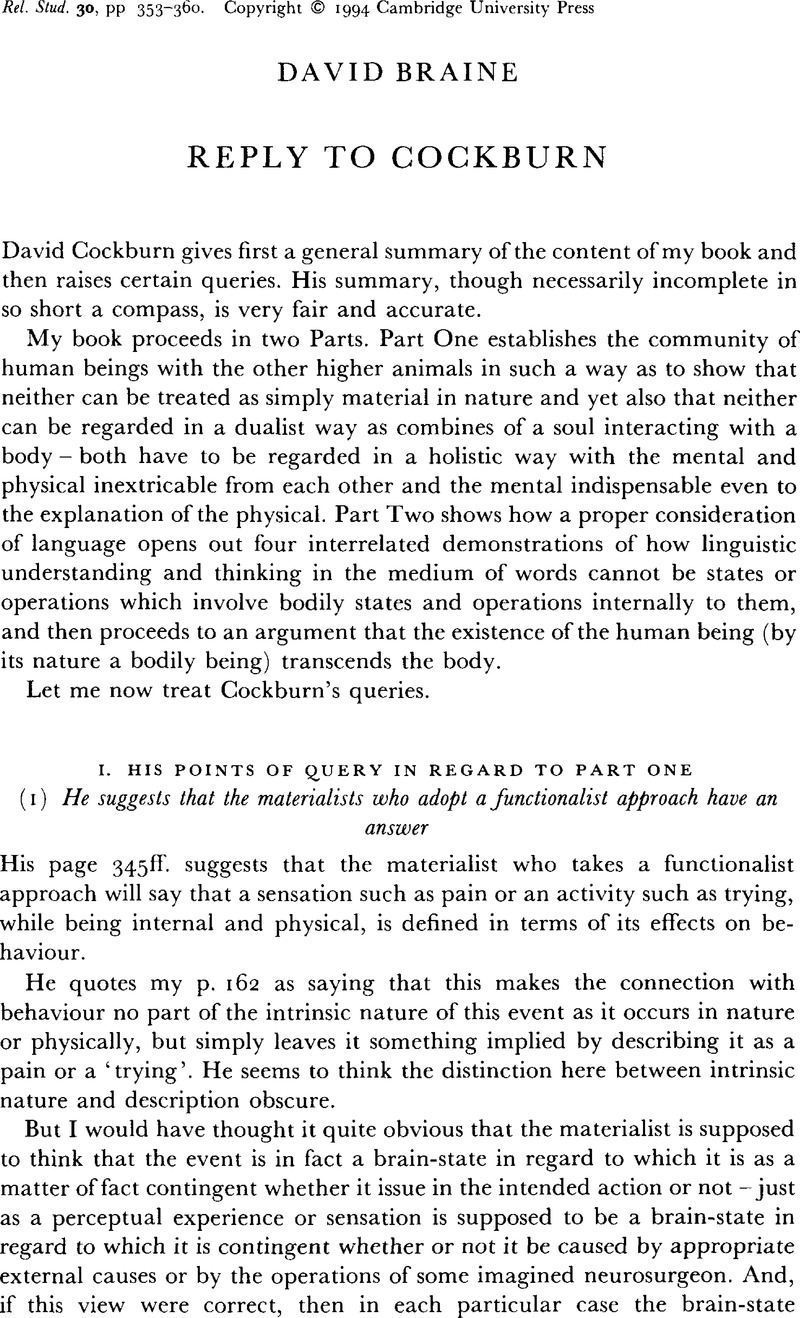No CrossRef data available.
Article contents
Reply to Cockburn
Published online by Cambridge University Press: 24 October 2008
Abstract

- Type
- Review Article
- Information
- Copyright
- Copyright © Cambridge University Press 1994
References
1 My book, pp. 155–9, makes clear that ‘tryings’ is a misnomer, and one should rather say ‘choices of physical action taken as it were in the action’.
2 In regard to the same event we ask both simple and topicalized questions (my p. 206 f.), and these will yield different explanations of different facts (cf. Cockburn's falling tree example, his p. 348). But this does not make two such rival explanations of the same fact legitimate. (My Ch. VI reveals my own elaborate view of explanation, refuting Davidson's myth of events as objects with its false divorce of ‘event-causation’ from explanation.)
3 Of course, there will be many things which are to be retrodicted in physical terms, e.g. for the saucepan to move with just such momentum at each instant of its passage through space in just such a way, there must have been at each stage just such a physical force exercised by Alfred (varying if his will to punish Bridget wilted or strengthened as his hand progressed). So, given details of this force (thus known) we can say that these physically explain the movement of the saucepan. And, by filling in the picture at other junctures, we can see that there is no lack of room for physical explanation, but that it always lacks the global role the materialist wants.
4 Supp. Vol. (1972), Proc. Arist. Soc. in Note A (ii), p. 169, summarizing discussion in my B.Phil. thesis at Oxford in 1965.
5 My The Reality of Time and the Existence of God, (OUP, 1988), sketches the basis for such a view in its pp. 64–83, 105–23, 150–7.Google Scholar
6 Wiggins combines this with entirely unsupported beliefs in the reducibility of our various concepts of different kinds of continuant (such as human and other animals, plants, inanimate things, e.g. rivers and mountains) to physically definable concepts of events, process and stuff, beliefs I refute.


